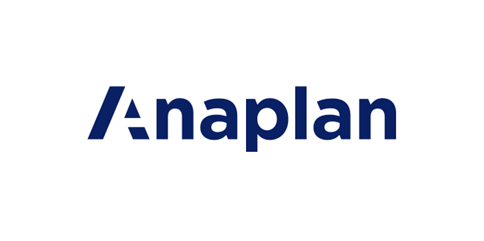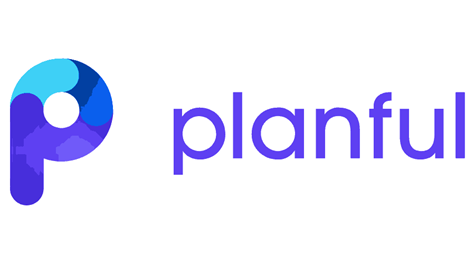Effective financial planning and precise forecasting are critical to achieving business growth and long-term sustainability. Companies must efficiently manage budgets, predict future performance, and make agile, data-driven decisions in an ever-changing market. Modern budgeting and forecasting software has revolutionized this process by automating workflows, integrating data sources, and delivering advanced analytics. These tools replace manual, time-consuming methods with streamlined, user-friendly solutions.
As we approach 2025, the demand for software that combines scalability, ease of use, and robust features continues to rise. Organizations are prioritizing systems that facilitate seamless collaboration, provide real-time insights, and offer customizable options tailored to specific needs. To help you navigate the options, we've curated a list of the top five budgeting and forecasting software tools for 2025. Each solution is designed to empower businesses with the tools they need to optimize financial planning and drive growth.
What Is Budgeting and Forecasting Software?
Budgeting and forecasting applications streamline financial planning by automating the creation of budgets, forecasts, and economic models. Unlike traditional spreadsheet-based methods, these systems consolidate data from multiple departments into a single, unified platform, ensuring greater accuracy, consistency, and faster processing times.
Key features include scenario modeling, real-time data integration, and collaborative tools that enable teams to effectively plan, track, and adjust financial strategies. Advanced platforms further enhance functionality with customizable dashboards, AI-driven insights, and drill-down analytics, allowing users to uncover critical business trends.
These tools empower organizations to manage cash flow more effectively, align resources with strategic objectives, and make informed financial decisions. By reducing manual errors and improving efficiency, the right technology can revolutionize how businesses approach budgeting and forecasting in 2025.
Top 5 Best Budgeting and Forecasting Software in 2025
1. Vena Solutions – Comprehensive Financial Planning Platform

Overview
Vena Solutions is a leading financial planning and analysis (FP&A) platform that integrates seamlessly with Microsoft Excel, providing businesses with a unified solution for budgeting, forecasting, and reporting. By leveraging the familiarity of Excel, Vena minimizes learning curves and enhances user adoption, allowing finance teams to maintain their existing workflows while benefiting from advanced planning capabilities.
Key Features
- Integrated Planning: Vena offers comprehensive financial management by integrating various planning processes, enabling organizations to align their strategic goals with operational execution. This integration facilitates accurate budgeting, forecasting, and reporting, ensuring all financial data is consolidated and accessible in one platform.
- Advanced Analytics: With AI-powered tools like Vena Insights, users can perform self-service reporting and leverage pre-built Power BI dashboards to uncover actionable insights. These analytics capabilities empower decision-makers with real-time data visualization and in-depth analysis, enhancing financial intelligence across the organization.
- Scalable Architecture: Designed to grow your business, Vena's platform supports scalability, accommodating increasing data volumes and user counts without compromising performance. This ensures that as your organization expands, Vena remains a reliable and efficient planning solution.
Pros
- Intuitive Excel-Based Interface: Vena's interface utilizes Excel, allowing users to work in a familiar environment. This reduces training time and promotes ease of use. This approach combines the flexibility of spreadsheets with the robustness of a centralized database, streamlining financial processes.
- Strong Collaborative Planning Features: Vena enhances collaboration through features like centralized templates, co-authoring, and live chat, enabling teams to work together efficiently. Additionally, workflow management tools provide real-time dashboards for tracking tasks and approvals, ensuring accountability and transparency throughout the planning process.
Cons
- Higher Costs for Advanced Plans: Vena's advanced plans, like the Complete plan with Vena Insights and premium support, are pricier than the Professional plan. Organizations should evaluate their needs and budget before choosing a plan.
Vena offers flexible pricing plans to accommodate various business sizes and requirements. The Professional plan includes the core Vena platform, a dedicated Customer Success Manager, standard support, and access to the customer portal. The Complete plan offers additional features such as Vena Insights, premium support, a sandbox environment, and expert-managed services. It's important to note that certain features in the Professional plan are available at an additional cost, whereas they are included in the Complete plan.
Vena Solutions stands out as a comprehensive FP&A platform that combines Excel's versatility with robust planning and analytics tools. Its user-friendly interface and collaborative features make it a valuable asset for organizations seeking to enhance their financial planning processes. However, potential users should carefully consider the associated costs, especially for advanced plans, to ensure alignment with their financial strategies and objectives.
2. Anaplan – Versatile Cloud-Based Planning

Overview
Anaplan is a top cloud-based planning platform built to empower large enterprises with advanced modeling and connected planning capabilities. Its scalable cloud infrastructure allows businesses to break down departmental silos, fostering real-time collaboration across teams and functions. By integrating data, people, and plans into a single platform, Anaplan enhances transparency, improves decision-making, and ensures that all stakeholders are aligned with strategic goals. Organizations benefit from its dynamic, forward-looking approach that adapts to changing market conditions, making it a valuable tool for financial planning, operations, and performance management in a rapidly evolving business environment.
Key Features
- Connected Planning: Anaplan's Connected Planning approach integrates data, people, and plans across the organization, breaking down silos and fostering cross-functional alignment. This holistic view enables more informed decision-making and agile responses to market changes.
- Scalable Modeling: The platform offers multi-dimensional modeling capabilities, allowing businesses to perform complex scenario analyses. With its Hyperblock® technology, Anaplan ensures rapid calculations and real-time updates, even when handling large datasets.
Pros
- Highly Customizable: Anaplan provides flexibility to tailor models and planning processes to specific business needs. Its modular approach lets decision-makers in various business units model their unique organizations and connect between units seamlessly.
- AI-Driven Insights: The platform incorporates advanced machine learning capabilities, offering predictive insights that drive growth and optimize decision-making. These intelligent features help organizations anticipate market trends and adjust strategies proactively.
Cons
- Complex Setup for Smaller Teams: Implementing Anaplan can be resource-intensive, potentially challenging smaller teams with limited technical expertise. The platform's comprehensive features may require significant time and effort to configure optimally.
Anaplan is a versatile cloud-based planning solution particularly suited for large enterprises seeking integrated and scalable planning capabilities. Its emphasis on connected planning and advanced modeling supports informed decision-making and organizational agility. However, smaller teams should carefully assess the implementation complexity to ensure it aligns with their resources and objectives.
3. Cube Software – Streamlined FP&A for Finance Teams

Overview
Cube Software is a sophisticated, spreadsheet-native FP&A platform that works with Excel and Google Sheets. Its ability to seamlessly synchronize data from ERPs, CRMs, and HRIS saves manual data entry and errors. This integration speeds up and improves financial operations for teams managing complicated financial data and reports. Cube is ideal for companies that want to streamline financial planning without abandoning spreadsheets.
Key Features
- AI Automation for Repetitive Tasks: Cube leverages artificial intelligence to automate routine tasks, allowing finance teams to focus on strategic analysis and decision-making.
- Seamless Data Synchronization: The platform ensures real-time data synchronization across spreadsheets, providing users with up-to-date information for accurate reporting and planning.
Pros
- Easy Adoption with Existing Tools: Cube's compatibility with familiar spreadsheet applications facilitates quick adoption without extensive training.
- Efficient Workflow Automation: By automating data consolidation and reporting processes, Cube streamlines workflows, saving time and reducing the risk of errors.
Cons
- Limited Scalability for Enterprise Needs: While Cube is effective for small—to mid-sized organizations, it is limited in handling complex, large-scale datasets. For instance, Cube restricts users to 8 dimensions per cube, with only four customizable dimensions, which may hinder detailed reporting and scalability for larger enterprises.
Cube Software offers a robust solution for FP&A professionals by integrating seamlessly with existing spreadsheet tools and automating data synchronization. Its AI-driven automation enhances efficiency, making it a valuable asset for organizations seeking to streamline their financial planning processes. However, larger enterprises with complex data requirements should assess Cube's dimensional limitations to ensure it aligns with their scalability needs.
4. Planful – Unified Financial Performance Management

Overview
Planful is an advanced AI-driven financial management platform designed to integrate both planning and reporting functions into a single, cohesive tool. This integration streamlines financial processes, enabling organizations to manage their budgeting, forecasting, and performance reporting more efficiently. By unifying these tasks, Planful helps businesses make better-informed decisions and respond quickly to financial insights.
Key Features
- Integrated Planning with Real-Time Insights: Planful offers a unified platform for budgeting, forecasting, and reporting, providing real-time insights that enhance decision-making.
- AI-Driven Analytics for Strategic Decisions: The platform analyzes financial data using artificial intelligence, delivering predictive insights that inform strategic business decisions.
Pros
- User-Friendly Interface: Planful's intuitive design simplifies navigation, enabling users to manage financial tasks efficiently without extensive training.
- Enhanced Collaboration: The platform facilitates collaboration among team members, ensuring alignment and improving the accuracy of financial planning and reporting.
Cons
- Premium Pricing: Planful's pricing starts at $1,250 per month, which may be considered a premium for some organizations.
Planful provides a comprehensive financial management solution that combines planning and reporting with AI-driven analytics. Its user-friendly interface and collaborative features make it a valuable tool for organizations seeking to enhance their economic performance. However, potential users should consider the premium pricing to ensure it aligns with their budget and financial objectives.
5. Spreadym – Excel-Native FP&A with Customization and Speed

Overview
Spreadym is an innovative Financial Planning and Analysis (FP&A) software platform that combines the versatility of Excel with the advanced capabilities of specialized budgeting, forecasting, and reporting tools. Designed to optimize financial planning, Spreadym integrates data from diverse corporate systems, streamlining budgeting processes by up to 70% and minimizing manual errors often associated with data transfers and verification. Its Excel-native interface allows users to capitalize on Excel's familiarity while benefiting from the enhanced functionality of a robust financial planning solution.
Key Features
- Excel-Native Interface: Spreadym integrates seamlessly with Excel, providing users access to robust FP&A tools within a familiar environment. Features such as drill-down analysis, customizable report builders, and advanced calculations enable precise and efficient financial modeling.
- Automated Data Collection: By connecting to corporate systems, including sales, HR, accounting, and production platforms, Spreadym centralizes data collection, eliminating manual transcription and reducing errors. This ensures users have access to real-time, accurate information, enhancing its effectiveness as a planning tool.
- Customizable Financial Models: Spreadym empowers users to create tailored financial models, such as cash flow forecasts and plan-versus-actual analyses. These customizable models provide businesses with the flexibility and control needed to address specific financial requirements and objectives.
- Centralized Metadata Management: The platform's centralized metadata management organizes data into a unified framework, ensuring consistency and reliability across reports and analyses. This feature strengthens data integrity and supports robust financial planning processes.
Spreadym is an adaptable solution that is suitable for a wide range of industries. Key applications include:
- Implementation in Agribusiness: Specifically designed to address the unique financial needs of agribusinesses, offering efficient planning and budgeting solutions.
- Implementation in Construction: Simplifies budgeting and forecasting for the construction industry, supporting effective project cost management and timeline adherence.
- Implementation in Retail: Crafted to assist retail businesses with financial planning and analysis, enhancing cash flow management and inventory forecasting.
- EV-Charging Stations: Optimizes financial operations for EV-charging stations, streamlining budgeting and reporting processes to drive sustainable growth.
Unique Advantages
Spreadym stands out in several key areas, distinguishing it from other FP&A solutions:
- Flexible Access Control: Ensures secure collaboration with role-based permissions and version control, safeguarding data integrity.
- Data Mapping with Integrity Control: Built-in safeguards ensure data consistency, improving the reliability of financial reporting and decision-making.
- Self-Service Implementation: Spreadym is designed for ease of use. It enables users to configure and modify rules independently, reducing the need for consultants and reducing costs and time.
Pros:
- Fully Customizable with Excel Familiarity: Spreadym's Excel-native design facilitates quick adaptation; it offers high customization to create tailored financial models, making it an efficient budgeting tool.
- Comprehensive Reporting and Drill-Down Analysis: Generates detailed reports such as income statements and balance sheets, with drill-down features for in-depth financial analysis, enhancing its planning capabilities.
- Fast Onboarding and Data Automation: Spreadym's intuitive interface and seamless data automation allow for quick onboarding, reducing training time and boosting team efficiency.
Cons and Solutions:
- No Built-In Industry-Specific Templates: While Spreadym does not offer pre-built industry templates, it allows users to create custom templates, enhancing flexibility for various business models.
- Lacks Built-In Contracts/Proposals Tool: Spreadym does not include contract management features. However, it integrates with third-party software, providing a comprehensive solution for both financial planning and contract management.
Conclusion: Why Choose Spreadym?
Spreadym is a sophisticated, Excel-native FP&A software that enhances financial planning, budgeting, and reporting with exceptional flexibility. The platform integrates seamlessly with business systems, automates data collection, and provides real-time insights, saving time, reducing errors, and fostering improved collaboration. Its ability to build customized financial models tailored to specific business needs, along with centralized data management, ensures reliable and consistent data for informed decision-making.
With an intuitive, customizable solution, Spreadym streamlines financial planning processes through quick setup, straightforward onboarding, and automated workflows. Its flexible, self-service approach makes it an ideal solution for businesses of all sizes, from small enterprises to large corporations. However, some customization may be required to accommodate industry-specific needs or contract management. Spreadym is well-suited to meet the budgeting, planning, and financial management demands of modern businesses.
Final Thoughts: Choosing the Right Budgeting and Forecasting Software
In 2025, businesses will need robust forecasting and budgeting capabilities to stay competitive. The five systems discussed—Vena Solutions, Anaplan, Cube Software, Planful, and Spreadym—offer distinct advantages tailored to specific business needs. Vena Solutions and Anaplan are ideal for larger organizations, excelling in scalability and comprehensive planning features. For companies seeking user-friendly, AI-powered tools that simplify processes and enhance decision-making, Cube Software and Planful are strong contenders. Spreadym, with its flexible setup, quick installation, and robust financial modeling tools, stands out for businesses that value customization and ease of use thanks to its Excel-native design.
Ultimately, the best choice depends on your organization's size, budget, and complexity. Investing in modern budgeting and forecasting tools enhances financial planning efficiency, ensures accuracy, and strengthens decision-making, preparing businesses for long-term success, regardless of the platform selected.


![Apple Watch Series 10 [GPS 42mm]](https://d.techtimes.com/en/full/453899/apple-watch-series-10-gps-42mm.jpg?w=184&h=103&f=9fb3c2ea2db928c663d1d2eadbcb3e52)


